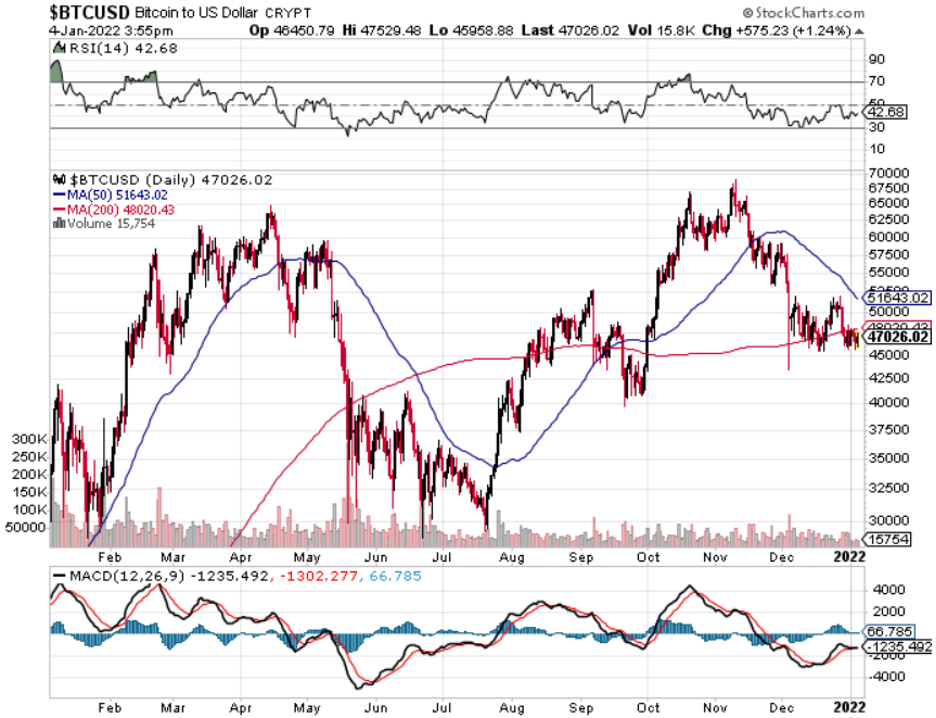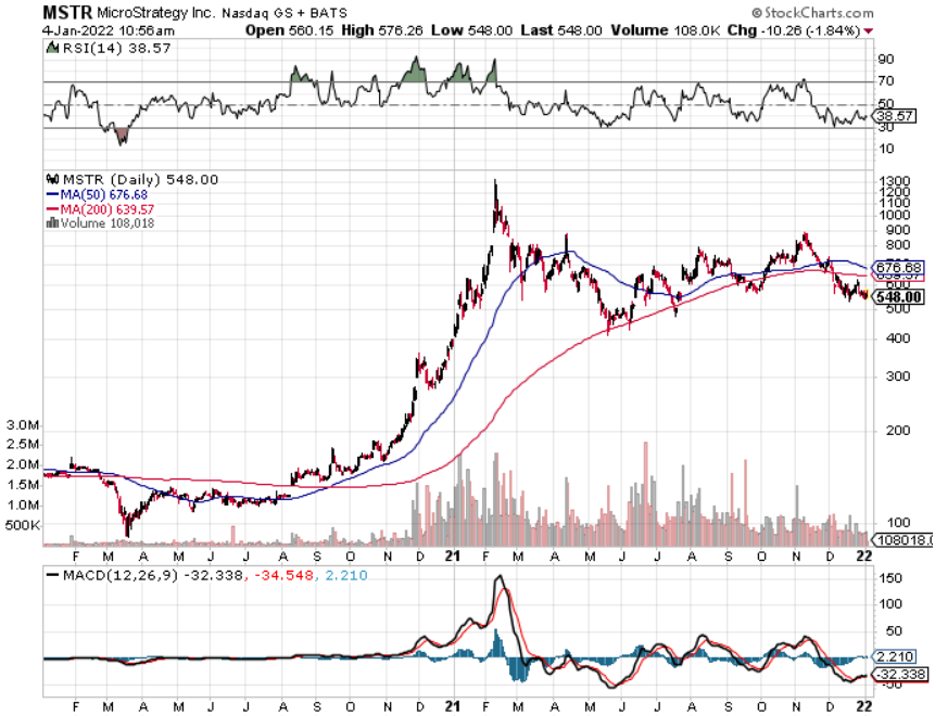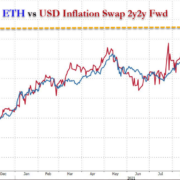After Bitcoin’s asymmetric rise to $65,000, the pullback to $45,000 has been hard on all of us.
The momentum sucked out of the asset shows how fortunes can turn on a dime, but that doesn’t mean the price of Bitcoin is dead, it’s just resting.
Without pussyfooting around, the truth is that Bitcoin is highly volatile which is why I do not encourage readers to bet the ranch on it at any moment in time or on any sort of cryptocurrency.
Even the use case of it is constantly attacked almost similar to when Tesla wasn’t Tesla yet and many emerging asset classes but go through teething pains before they mature.
The bottom line is that as volatility increases, the potential to make more money quickly also increases.
Conversely, the bad news is that higher volatility also means higher risk.
When elevated volatility consumes asset prices, the possibility for above-average profit is squarely on the table, but you also run the risk of losing a larger amount of capital in a relatively shorter period of time.
That being said, it’s salient to take measure of what’s going on beneath the surface in order to take a barometer of the health of the industry development.
We aren’t in the business of buying apartment buildings with tofu-like foundations.
This disciplined approach will help you successfully navigate higher volatility asset classes and manage volatility for your benefit—while minimizing risks.
Beneath the surface, the quantity of Bitcoin (BTC) held by private corporations increased significantly during 2021, improving on the 2020 signaling a maturing of the asset class.
Many fortune 500 companies and a smattering of other public companies have scooped up significant Bitcoin purchases and are highly exposed to Bitcoin on public equity markets.
They mainly do this by buying newly minted crypto ETF’s which there are an ever-growing number of choices even though some have chosen to buy directly from crypto brokers.
This isn’t the Bitcoin of 2 years ago, things have moved on quite drastically.
And I am not just talking about MicroStrategy (MSTR) who have been outspoken about their commitment to the digital gold.
MSTR has also been a huge supporter of online seminars aimed to explain the legal considerations for firms seeking to integrate Bitcoin into their businesses and reserves.
As you see, not all companies use Bitcoin the same way, and public corporations are increasingly viewing crypto as contained to only one part of their balance sheet.
For some, they have made it their entire balance sheet on the backs of corporate bond issuances.
This is of course never happened 2 years ago.
CEO of MSTR Michael Saylor’s is a leading business intelligence firm and is known for being particularly bullish on Bitcoin, owning almost $6 billion in crypto assets.
MSTR just bought another 1,914 Bitcoin worth $94 million. The company has gained more than $2.1 billion in profit since its initial Bitcoin purchase in August 2020.
The data shows that digital currency asset management company Grayscale, a de facto bitcoin ETF and proxy of Bitcoin, had gained the highest market share by a landslide at 645,199 Bitcoin by the end of 2021. This took up 71% of the wider market as holdings of all spot ETFs and corporations together totaled 903,988 Bitcoin according to the chart.
MicroStrategy is the largest corporate investor, holding 124,391 Bitcoin valued at around $5.8 billion, according to Bitcoin Treasuries. Second-placed Tesla holds around 43,200 Bitcoin worth roughly $2 billion at current prices.
In 2020, the amount of Bitcoin held by public companies surged 400% in 12 months to $3.6 billion and 2021 showed more inroads while 2022 is poised again to shatter records.
Internally, Bitcoin and cryptocurrencies as a whole are making the right moves to consolidate this asset class as a legitimate industry whether it be DeFi apps or the growing adoption rate.
I see more public companies participating in Bitcoin as a resounding vote of confidence for the currency and this will put the asset in good stead for the long term.
For the short term, the signaling of higher interest rates has really put the kibosh on the price of Bitcoin, but that should be priced into the equation at this point.
The Fed then moving not as fast to raise could offer crypto that narrow path to higher prices.
At the very minimum, the Fed has stolen crypto’s thunder and all attention has gravitated towards what they will do next, and we can see that in how Bitcoin prices have fluctuated because of that.
I expect a slow grind up from the mid-$40,000 if the Fed signals to investors that they will raise rates slower than first imagined.





